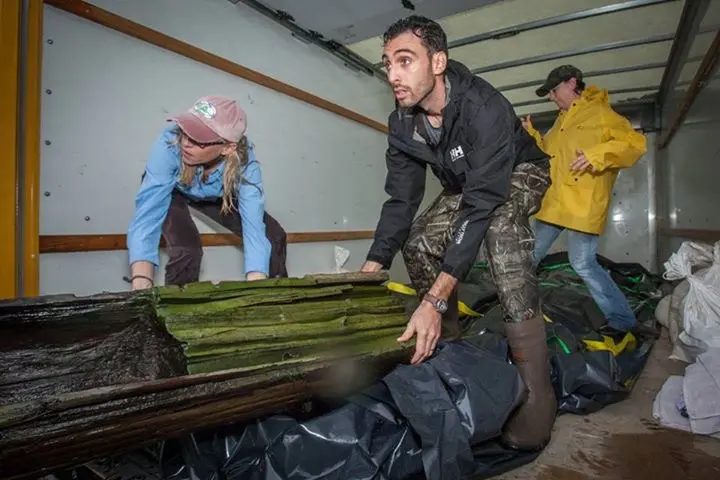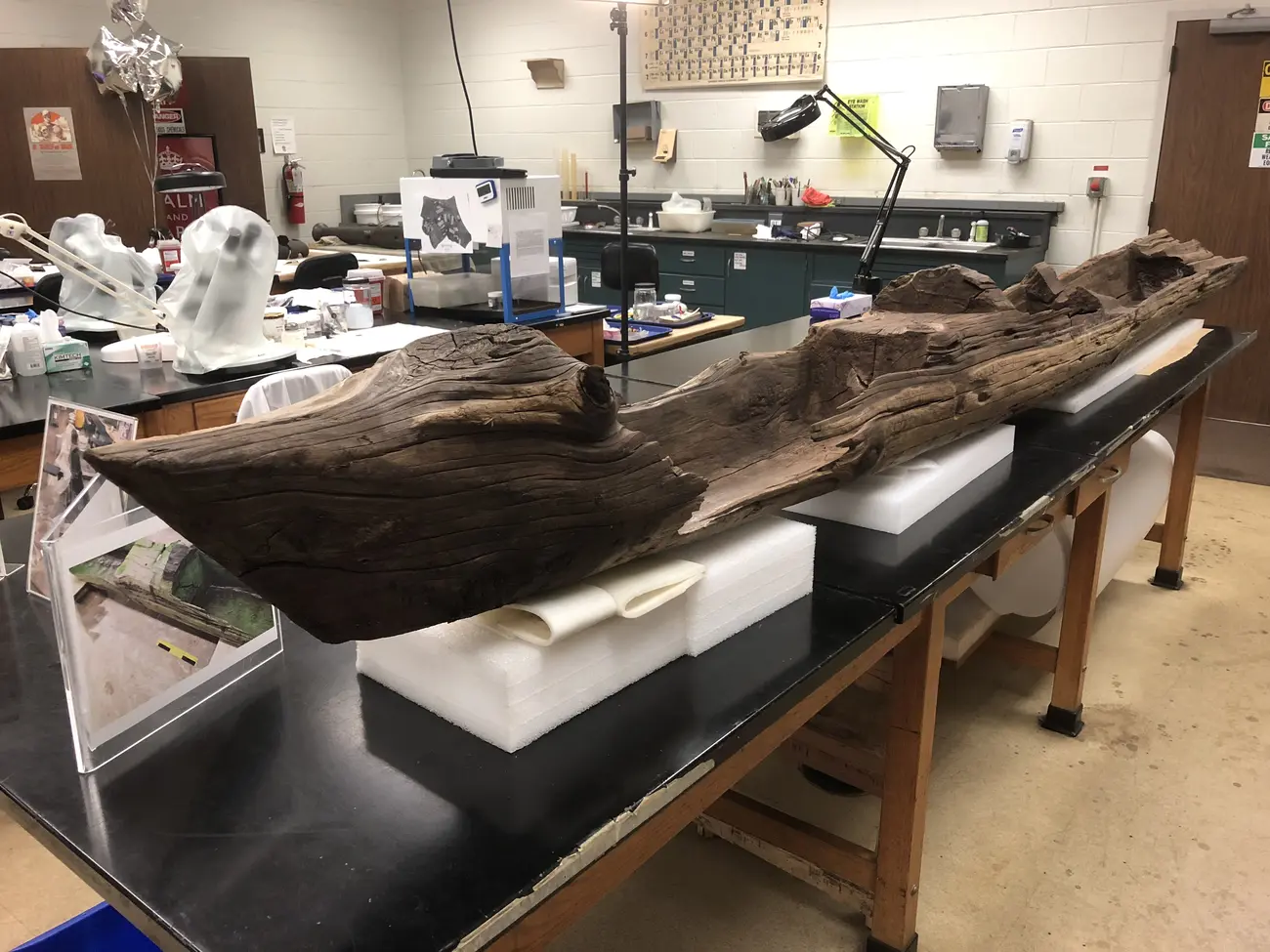Nearly a year ago, hurricane Irma swept through Brevard County.
The day after the storm, September 11, 2017, Rockledge photographer and archaeology enthusiast Randy Lathrop, also known as Randy Shots, discovered that the hurricane had dislodged an historic canoe and washed it ashore from the Indian River in Cocoa.
The 15 foot, 700 pound canoe captured the public’s imagination.
The story made the front page of the Wall Street Journal, was published in Smithsonian magazine, and went viral on social media. The fact that the canoe was challenging for archaeologists to date and analyze just added to its mystique.
A year later, after extensive testing, archaeologists are still not exactly sure how old the canoe is.
“I was lucky enough to get a sample of that canoe and I was really excited because I grew up in Florida,” says Carla Hadden from the University of Georgia Center for Applied Isotope Studies. Hadden conducted carbon dating tests on the canoe sample, trying to determine its age.
“When we got the results, I knew it was going to be a kind of interesting to explain because rather than being able to say, ‘oh this dates to exactly this year A.D.,’ we ended up with three discreet possible ranges, so it kind of added to the mystery of how old this canoe was rather than giving a definitive answer.”
Since 1949, radiocarbon dating has been a primary tool for archaeologists to determine the age of objects. In the case of the Irma Canoe, the results were less than conclusive. Analysis shows that there is a 50% chance that the canoe was made between 1640 and 1680. There’s a 32% chance it’s from between 1760 and 1818, and an 8.6% chance it was created after 1930.
Along with carbon dating, dendrochronology helps archaeologists determine when artifacts like dugout canoes were created.
The ancient Greeks observed that rings form inside of tree trunks, and in the Renaissance, Leonardo da Vinci noticed that those tree rings form annually. By the early twentieth century, dendrochronology evolved as a science.
Cross-dating is the first principle of dendrochronology.
“There’s going to be the pattern of variability on ring width,” says Laura Smith from the University of Tennessee, Laboratory of Tree Ring Science.
“So if we have an item, an archaeological piece, say a canoe, that is undated, we call that a floating chronology. We can measure up the rings and we can know that pattern, but we don’t know where it is in the context of time. To help understand that, we use what’s called a master chronology. These have been developed all over the world. There’s what’s called the international tree ring databank.”
The master chronologies associate each annual tree ring with a calendar year. Scientists use statistical methods to match the floating chronology from a specimen like the Irma Canoe with the master chronology in a particular region.
Unfortunately, dendrochronology couldn’t help archaeologists figure out if the Irma Canoe was created in the 1600s, 1700s, 1800s, or 1900s.
“One of the issues with the Irma Canoe is that it’s Red Cedar which is quite unusual,” Smith says. “I guess this is the only canoe in the state of Florida that they recorded of this species. And there aren’t Red Cedar chronologies in Florida. So, that’s kind of an issue we’ve come up against.”
Hundreds of canoes have been discovered in Florida, some created as long as 7,000 years ago. Even if we don’t know exactly how old the Irma Canoe is, it is still an intriguing discovery.
“It’s exciting when the public gets excited about canoe research, and it’s really fun, because we don’t have to sell it,” says Julie Duggins, who recovered the Irma Canoe for the Florida Bureau of Archaeological Research. “It’s just by nature pretty thrilling to Floridians to learn about something like boats, boat making, this tradition that goes back thousands of years. We’ve got the highest concentration of dugout canoes in the world here.”
If you happen to stumble upon what appears to be an ancient canoe, or any archaeological artifact, Duggins encourages you to call the Florida Bureau of Archaeological Research, like Randy Lathrop did when he found the Irma Canoe.
Dr. Ben Brotemarkle is executive director of the Florida Historical Society. He’s also host of “Florida Frontiers: The Weekly Radio Magazine of the Florida Historical Society” and the public television series “Florida Frontiers.” More information is at www.myfloridahistory.org.

